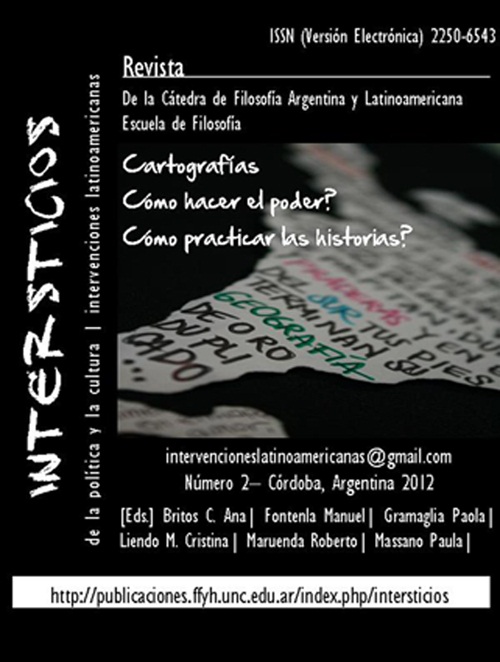‘LAS MUERTAS DE JUÁREZ’: PRODUCIR ARTE DESDE EL TRAUMA SOCIAL
Abstract
Resumen:
Juárez es una ciudad que se encuentra en la frontera entre México y Estados Unidos. Desde 1993 más de mil mujeres, en su mayoría jóvenes y pobres, han sido secuestradas, torturadas sexualmente, asesinadas y arrojadas a lotes baldíos en esa ciudad, la mayoría de los casos no han sido resueltos. En el marco de la llamada ´guerra contra el narcotráfico’, la violencia se ha extendido y acentuado, construyendo un clima social de temor y trauma en el que la violencia exacerbada forma parte del paisaje cotidiano de esta localidad fronteriza. El objetivo del presente ensayo es acercarse al entramado social y emocional que propicia, o incluso fomenta, este tipo de crímenes para luego reflexionar, a través del análisis crítico de una pieza, sobre el arte de denuncia que se ha producido en torno a este sensible tema, su discurso, su economía de la imagen y sus potencialidades sociales y políticas. Por último se abordará el debate en torno a las políticas de la representación del dolor y la violencia en el mundo contemporáneo marcado por el exceso de lo visual (devenido en espectáculo), y su relación con las necesidades sociales de memoria, justicia y paz.
Palabras claves: Ciudad Juárez, feminicidio, violencia, arte, trauma.
Abstract:
Since 1993 in Ciudad Juarez, a border town between Mexico and the USA, more than a thousand women have been kidnapped, sexually tortured, murdered and thrown away in empty lots. Most of them were young and poor, and these cases remain unsolved. In the frame of what has been called "the War on Drugs", the violence has risen and spread, creating an atmosphere of fear and trauma where the exacerbated violence is part of the daily landscape. In this essay we aim to make an approach to the social and emotional framework which favors and even foments this kind of crimes, as well as to reflect, through the critical analysis of a piece of art, on the denounce art produced in connection with this sensitive subject, its discourse, its economy of image and its social/political potentials. At the end of this paper, there is an approach to the debate about the representation politics of pain and violence in the contemporary world defined by a visual excess (becoming a spectacle), and its relationship with the social needs of memory, justice and peace.
Downloads
Downloads
Published
Issue
Section
License
Authors who have publications with this journal agree to the following terms:
a. Authors will retain their copyright and grant the journal the right of first publication of their work, which will simultaneously be subject to the Creative Commons Attribution License that allows third parties to share the work as long as its author and first publication in this journal are indicated.
b. Authors may adopt other non-exclusive license agreements for distribution of the published version of the work (e.g., deposit it in an institutional telematic archive or publish it in a monographic volume) as long as the initial publication in this journal is indicated.
c. Authors are allowed and encouraged to disseminate their work through the Internet (e.g., in institutional telematic archives or on their web page) after the publication process, which may produce interesting exchanges and increase citations of the published work (see The effect of open access).


